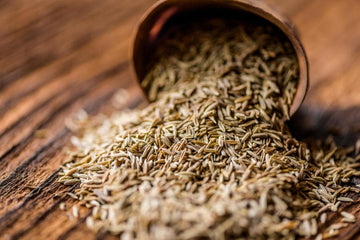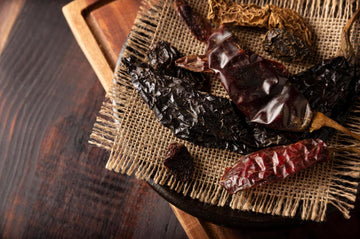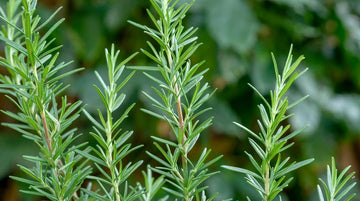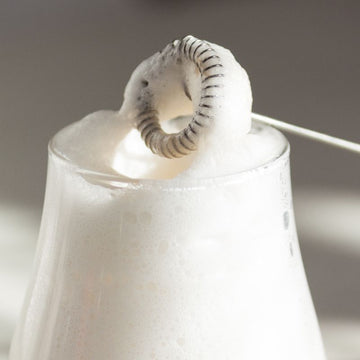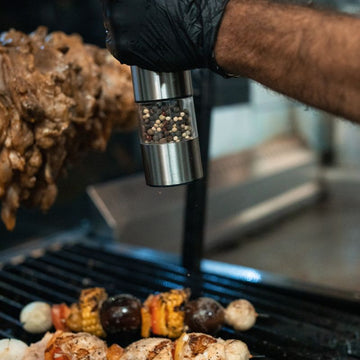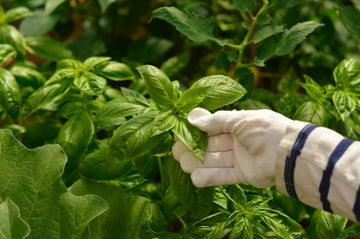Dried chili peppers are a staple across cuisines not because they’re trendy, but because they’re practical, potent, and packed with depth. Drying doesn’t just preserve the pepper, it transforms it. The flavor becomes more concentrated, sometimes smoky, often complex, and always more intense than its fresh counterpart.
Cooks and home chefs alike turn to dried chilies not only for heat, but for structure and body in sauces, stews, and marinades. But like anything else in the kitchen, choosing the right dried chili pepper isn’t as simple as grabbing the nearest one off the shelf. From mild anchos to fiery arbols, each variety brings its own character, and how you use it will depend on how you prepare it.
This article breaks down the most common types of dried chili peppers, how they compare to fresh ones, how to prepare them properly, and how they stack up against other spices in your pantry.
Dried chili peppers vs fresh chili peppers
While dried and fresh chili peppers come from the same fruit, they’re entirely different ingredients once you start cooking. Drying changes everything: flavor, texture, and how you use them.
Flavor is perhaps the most noticeable distinction. Fresh peppers often bring brightness, sharpness, and a clean vegetal note. Their flavor tends to be straightforward: crisp and sometimes grassy. Dried peppers, on the other hand, develop deeper, richer profiles. The drying process concentrates sugars, enhances smokiness, and sometimes introduces bitter or earthy undertones. A dried guajillo doesn’t just taste like a fresher version of itself. It’s a whole different presence in a dish.
Texture also shifts dramatically. Fresh peppers are crisp or tender, depending on the type. Dried ones are leathery or brittle. They need to be soaked, ground, or toasted to be usable, which adds more steps but also more control over how they release flavor.
Heat level can feel different, too. While drying doesn’t technically increase a chili's Scoville rating, the removal of moisture means the heat can hit faster and feel more intense. Especially in ground or flake form. Some dried varieties, like árbol or puya, carry an assertive burn that feels sharper than their fresh relatives.
Uses in cooking vary widely. Fresh chilies work well raw, in salsas, salads, or garnishes. They bring crunch and color to the plate. Dried chilies, on the other hand, are rarely eaten as-is. They're rehydrated for sauces, blended into pastes, infused into oils, or toasted and ground into powders. They form the backbone of many global dishes. Think mole, harissa, chili oil, or Indian curries.
In short, fresh chilies are immediate and bright. Dried ones are complex and layered. Neither is better. They just serve different purposes, and knowing when to reach for which one makes all the difference.
Types of common dried chili peppers
Dried chili peppers come in a remarkable variety, each offering its own balance of heat, aroma, and complexity. Some are fiery and sharp, while others are mellow and sweet, often used as the foundation for sauces, rubs, or infusions. Below are some of the most widely used types and what sets them apart:
Ancho
Ancho chilies are the dried form of poblano peppers. They’re large, deep reddish-brown, and mildly spicy. More importantly, they’re rich in flavor: sweet, smoky, and often described as having raisin or prune-like notes. These are essential in Mexican mole sauces and great for marinades or chili bases where depth matters more than heat.
Guajillo
Slightly spicier than anchos but still on the mild end, guajillos have a bright, tangy flavor with hints of green tea, berries, and subtle smokiness. They're one of the most commonly used dried chilies in Mexican cuisine and are often combined with anchos for balance.
Pasilla
Long and black, pasilla chilies are often confused with anchos, but their flavor is more earthy, with notes of cocoa and dried fruit. They’re mild in heat and are often used in sauces, soups, and stews. Particularly in the Oaxacan “holy trinity” of chilies (alongside ancho and guajillo).
Chiles de Árbol
These small, thin, and fiery chilies pack a clean, searing heat. When dried, they retain their bright red color and are ideal for adding a sharp kick to salsas, hot sauces, or chili oils. They don’t offer much complexity in flavor but are favored for their heat and versatility.
Chipotle
Chipotles are smoked, dried jalapeños. Their signature trait is a deep, rich smokiness layered with moderate heat and a slightly sweet undertone. They're commonly found in adobo sauce and often added to marinades, stews, and anything that benefits from both heat and a strong smoky punch.
Cascabel
Named for the rattle-like sound their seeds make when shaken, cascabels are round, reddish-brown chilies with a nutty, slightly smoky flavor and low to medium heat. They’re excellent in sauces where you want a warm base without overwhelming spice.
Puya
Similar to guajillo but smaller and spicier, puya chilies bring brightness, heat, and a hint of fruitiness. They’re often used in place of árbol when a slightly more layered flavor is needed.
Mulato
Closely related to ancho but darker and with more of a chocolate-coffee depth, mulatos are another key player in mole sauces. They’re sweet, smoky, and mild in heat but heavy in richness.
Understanding these varieties helps you not only choose the right pepper for your dish but also combine them thoughtfully. It’s common to layer multiple dried chilies together. Like ancho for sweetness, guajillo for brightness, and árbol for heat, to create a sauce or stew that’s complex and balanced.
How to prepare dried chili peppers
Preparing dried chili peppers doesn’t have to be complicated. Depending on the dish and your preferred intensity of flavor, there are a few methods you can use to get the most out of them.

Toasting
One of the most common ways to prepare whole dried chili peppers is by lightly toasting them. Toasting helps release their natural oils and intensifies the flavor.
-
How to do it: Heat a dry skillet over medium heat. Add the chilies one at a time, pressing them flat for a few seconds on each side until they become fragrant and slightly puffed. Be careful not to burn them, this can make the flavor bitter.
-
When to use: Perfect before rehydrating for sauces, salsas, or soups.
Rehydrating for sauces
Once toasted, many dried chilies can be rehydrated to soften their texture and mellow their intensity.
-
How to do it: Place the toasted chilies in a bowl and pour hot (but not boiling) water over them. Let them soak for 15–30 minutes until they’re pliable. Then, remove the stems and seeds if desired and blend into a smooth paste with garlic, onion, or spices.
-
When to use: Ideal for mole, enchilada sauce, chili paste, or marinades.
Grinding into powder
Sometimes, you don’t need to go through the full process of toasting and soaking. Dried chilies can also be ground into a fine powder to use as a spice. Just like store-bought chili powder, but fresher and more flavorful.
-
How to do it: Use a spice grinder or a dedicated electric mill to grind the dried chilies into a powder. For convenience, our Rechargeable Electric Salt and Pepper Grinder Set makes this especially easy. Its adjustable grind settings let you control the coarseness, so you can go from a fine chili dust to a chunkier flake depending on your recipe.
-
When to use: Great for seasoning rubs, taco mixes, roasted vegetables, or simply adding heat to your meal at the table.
Different dishes call for different forms: whole, chopped, soaked, or ground. Keeping a few varieties of dried chili peppers in your pantry and a reliable grinder on hand gives you full flexibility to experiment and control the flavor exactly how you want it.
Dried chili peppers vs. other spices
Dried chili peppers aren’t just about heat. They bring depth, complexity, and a distinct character that doesn’t overlap cleanly with other spices. To understand where they sit in the broader spice landscape, it’s better to look at individual comparisons, because no two spices serve the same purpose.

Black pepper
Black pepper delivers a quick, sharp bite—clean, woody, and familiar. But unlike chili peppers, its pungency fades fast and lacks warmth. You’ll find black pepper used in almost everything, but it rarely defines a dish. Dried chilies, on the other hand, can carry a dish’s entire flavor identity. They’re more than a background note—they can be the main event.
Paprika
Paprika might come from ground chilies, but it’s often mild, even sweet. It’s valued more for its color or smoky undertone than its heat. In contrast, whole dried chili peppers offer a broader range: sweet, smoky, bitter, and extremely hot. Paprika is a finishing spice; dried chilies are a building block.
Cumin
Cumin adds earthiness and depth, but it brings no heat. It’s the kind of spice you notice after a few bites: a low, warm hum. Dried chilies are more direct, more front-loaded in flavor. When used together, cumin and chili create balance, but they rarely compete. They operate on different layers of the palate.
Rosemary
Rosemary is sharp, herbal, and piney, and nothing like chili. It’s used for its fragrance, not for any kind of punch. You’d use rosemary to flavor roasted meats or potatoes, not to shape the base of a sauce. It’s unlikely you’d substitute one for the other, but used together in infused oils or marinades, they can contrast in an interesting way.
Oregano
Oregano has a brightness and bitterness that can lift a dish, especially in tomato-heavy or acidic recipes. It doesn’t overpower. Dried chili peppers, in comparison, add weight. They anchor dishes. Especially in Mexican cooking where both are often used side by side to create contrast.
Coriander
Coriander has a citrusy, almost floral flavor. It’s mild but distinctive. Chili peppers are bolder, darker, and more grounded. While coriander might highlight the high notes of a dish, chilies tend to dig into the low end. Again, they’re not competing; they’re completing different parts of the flavor spectrum.
Dried chili peppers don’t replace other spices. They work in conjunction or stand on their own, but they always change the direction of a dish more aggressively than the average herb or seed. The comparison isn’t about which is better; it’s about what you want the spice to do.
Final thoughts
Dried chili peppers are a foundational ingredient in many kitchens, offering variety in flavor, intensity, and technique. Compared to fresh chilies and other common spices, they serve a distinct role: not necessarily better, just different. Understanding how to choose, prepare, and pair them opens up a more flexible, nuanced approach to cooking.
Whether you’re grinding them with a tool like the Rechargeable Electric Salt and Pepper Grinder Set or rehydrating them for sauces, their usefulness depends on how you want a dish to speak.
FAQs
How do you store dried chili peppers to preserve their flavor?
To maintain their potency, dried chili peppers should be stored in an airtight container in a cool, dark place, away from heat and sunlight. While they don’t technically spoil, exposure to air and light will cause them to lose aroma and intensity over time. For long-term storage, freezing them in a sealed bag is effective without damaging the flavor or texture.
Do different dried chilies lose heat over time at the same rate?
No, heat retention varies between chili varieties. Peppers with higher concentrations of capsaicin (like chile de árbol or Thai chilies) tend to retain their heat longer than milder ones (like guajillo or ancho). How they’re dried and stored also plays a role. Sun-dried peppers exposed to oxygen typically degrade faster than those dried in controlled environments.
Can dried chili peppers trigger allergies or digestive issues?
Yes, for some people. Dried chilies can be irritating to individuals with sensitivities to capsaicin or nightshades. Grinding them can also release airborne particles that may irritate the respiratory system. Always handle with care, especially in enclosed kitchens. If you're cooking for someone with dietary restrictions, it's worth asking.
Is there a flavor difference between whole dried chilies and pre-ground chili powder?
Yes, significantly. Whole dried chilies retain more volatile oils, which means deeper and more complex flavor when freshly ground. Pre-ground chili powders often include anti-caking agents and may contain a blend of spices, not just pure chili. If you're aiming for control and freshness, grinding whole chilies is almost always superior.
Are there any cuisines that use dried chili peppers differently from the norm?
Absolutely. In Mexican cuisine, dried chilies are often toasted and blended into sauces for richness, not just heat. In Szechuan cooking, they’re fried whole to infuse oil without being eaten directly. In Indian cooking, dried chilies are used in tadka (tempering) to build a dish’s base flavor. Understanding how each cuisine applies heat and aroma gives you better creative control.
